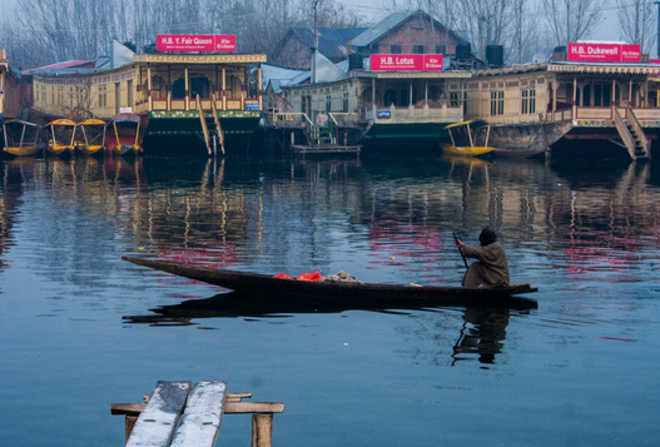
The episodes covered in the book relate more to the human aspects rather than terrorism in the Valley
Lt Gen Vijay Oberoi (retd)
Holy Sinners: Search for Kashmir is an intriguing name, but once you start reading the book; the reason for the title becomes obvious. As one goes through the book, the title begins to take a more meaningful and holistic shape and one understands the reason for this somewhat quaint name. While the well-known quote says ‘Don’t judge a book by its cover’, in this case, it is the intriguingly simple yet effective title that attracts one’s attention.
Many books have been written on the proxy war being waged in Jammu and Kashmir that has now entered its third decade, and there is seemingly no end in sight. While Holy Sinners is all about the proxy war, two aspects that are different stand out. Firstly, it is down to earth as it deals with areas not written about earlier; the reference here is to the focus on sub-unit and small-team operations and not on issues at the historical, policy and strategic levels, as most writings on J&K tend to be.
Secondly, the events or rather episodes covered relate more to the human aspects rather than a war-fighting perspective, which, of course, is what one usually reads about in news papers, magazines and books.
It is also not a book about the rights and wrongs of the continuing struggle but looks at the turmoil in the minds of the three ‘dramatis personae’, who stand out in this struggle; these three are the army and other security forces, who are bravely fighting a difficult battle; the highly motivated and indoctrinated insurgents and terrorists; and the majority of people of J&K, who find themselves caught in the middle. Saras Tripathi leaves the readers to decide as to who needs the maximum sympathy. This inevitably is the essence of this book.
The book is in two broad time-zones. The first is during 1992-94, when the insurgency was at its height in the Srinagar Valley and the author was a young officer on his first posting after being commissioned. This period saw him at the ‘business end’ of the Army’s Counter Insurgency (CI) and Counter Terrorist (CT) operations —domination patrols, search-and-destroy missions, carrying out raids and screening suspects. The second period relates to his tenure on the Line of Control (LoC) in one of the forward most pickets in the Uri sector during 1997-99, when he was an experienced company commander.
There are a total of 14 chapters in the book, of which 12 deal with operations against insurgents and only two relate to the management of the LoC. Each chapter is self-contained, dealing with a particular episode from beginning to end, containing actions as well as observations of a young Army officer, some of which are highly profound.
Besides military activities, Tripathi also writes about the natural beauty of this lovely state and, at times, gets fairly allegorical in his descriptions. There are two common threads between the two periods. The first is the perfidy of Pakistan, whether through insurgents trained in the Pakistan Occupied Kashmir (POK) or through Pakistani Army personnel posted on the LoC. Both show the cunning nature and untrustworthiness of Pakistan. The second is the human aspects of the tragedy of Kashmir and how the common people are coping.
Chapter 11 addresses the plight of the Kashmiri Pandits, who were murdered or chased out of their beloved ancestral land by Pakistan’s hegemonic and unending, though futile, appetite for usurping J&K by force. The author has dealt with this subject in a highly professional manner, highlighting the grievous hurt caused to this community by both violence on the part of the insurgents and the omissions of both the central and state governments, which did little to assist them.
The author has written this book from the perspective of a junior army officer and has narrated episodes as seen and felt by a young officer, who was doing his duty and abiding by all the rules, regulations and advisories given to him. All episodes are as conducted at the sub-unit level, which is actually the most important level in CI and CT operations.
This book, however, goes beyond the conduct of military operations, as the author in his inimitable style deals with what goes on in the minds of the three actors mentioned earlier, in such operations. It is to the credit of the author that he has given equal time and emphasis to all three. This is not an easy task, especially when one is a player himself! Saras has managed it extremely well, no doubt subsuming his military professionalism and training.
This book needs to be read not just by soldiers or the people of Kashmir or analysts, but by all right thinking persons, who appreciate the bravery and courage of men and women of our military, especially the humble jawans and young officers involved in a thankless job for the nation, and who empathise with the people so cruelly caught in the vortex of violence.



























